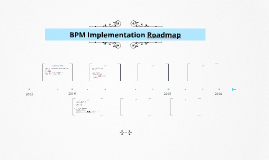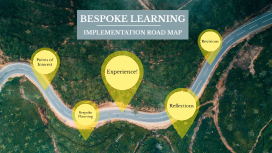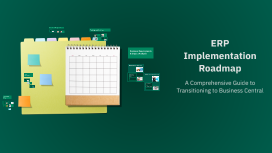CSDM Implementation Roadmap
Transcript: CSDM Implementation Phases: Crawl, Walk, Run, Fly Implementation Roadmap and Additional Suggestions The implementation of CSDM can be structured into four key phases: Crawl, Walk, Run, and Fly. The Crawl phase focuses on governance and planning, allowing organizations to lay a solid foundation. In the Walk phase, organizations integrate tooling and initiate data quality and compliance processes. The Run phase emphasizes advanced CSDM alignment, ensuring robust operational practices. Finally, the Fly phase represents a focus on continuous improvement and innovation, unlocking the full potential of CSDM. Continuous Improvement and Change Management The CSDM implementation roadmap outlines a structured approach to integrating the Common Service Data Model, ensuring that IT services align with business goals effectively. By focusing on continuous improvement and stakeholder communication, organizations can enhance their configuration management processes significantly. Continuous improvement is essential for effective CMDB alignment with CSDM. Implementing robust change management practices ensures that all stakeholders adapt to changes seamlessly. Organizations should regularly assess their data quality and enhance processes based on feedback and evolving business needs. This approach fosters a culture that embraces innovation and agility. Stakeholder Communication and Success Metrics Monitoring Effective communication with stakeholders is critical to the success of CSDM implementation. Regular updates and transparent processes involve all relevant parties, including IT leadership and service owners. Monitoring success metrics allows organizations to gauge progress, identify areas for enhancement, and ensure alignment with strategic objectives. This data-driven approach supports informed decision-making throughout the implementation process. Role of Risk and Compliance Officers Risk and Compliance Officers are essential in managing regulatory requirements and mitigating risks associated with data management. They ensure that CMDB processes meet compliance standards and that any identified risks are addressed through appropriate governance frameworks. Their input contributes to building a resilient data management practice that supports business objectives. Stakeholder Engagement for Success The Importance of IT Leadership Engaging stakeholders at all levels is critical for the success of the CSDM implementation. Collaboration among Enterprise Architects, IT Leadership, Configuration Managers, and Risk Officers fosters an environment of shared understanding and accountability. Regular communication and feedback loops ensure that stakeholders remain informed and aligned with project goals, ultimately resulting in a more effective outcome. IT Leadership is instrumental in driving CSDM initiatives from a strategic standpoint. Their support is vital for resource allocation, process governance, and fostering a culture that embraces data-driven decision-making. Service Owners, who have deep insights into service delivery, also play a critical role in ensuring that services align with business needs and that their dependencies are accurately reflected in the CMDB. Enterprise Architect and Configuration Manager Roles Identifying Relevant Stakeholders The Enterprise Architect plays a crucial role in aligning IT strategy with business goals. They ensure that the architecture of information systems supports organizational objectives. The Configuration Manager is responsible for maintaining the integrity of the CMDB, overseeing the data modeling process, and ensuring accurate records of all Configuration Items (CIs). Together, both roles are integral to bridging the gap between technology and business requirements. Effective implementation of CSDM relies heavily on identifying the right stakeholders who can influence or contribute to the process. The involvement of various key roles ensures alignment with strategic goals and enhances collaboration throughout the implementation phases. Foundation Layer Implementation Service Mapping and Governance In this phase, aligning the CMDB with the CSDM is prioritized. Initiatives for improving data quality are implemented, which include standardizing data entry and validation processes. Establishing a robust foundation is key to supporting other layers of service management effectively. Service mapping is essential for visualizing the relationships between business services, applications, and infrastructure components. Implementing governance structures ensures accountability and strategic oversight throughout the CMDB lifecycle. This phase reinforces the entire data architecture, facilitating better decision-making and operational efficiency. Planning and Preparation Phases of Implementing CMDB This initial phase is crucial for engaging key stakeholders, ensuring their input shapes the project scope. A thorough assessment of the current state of data management practices is

















